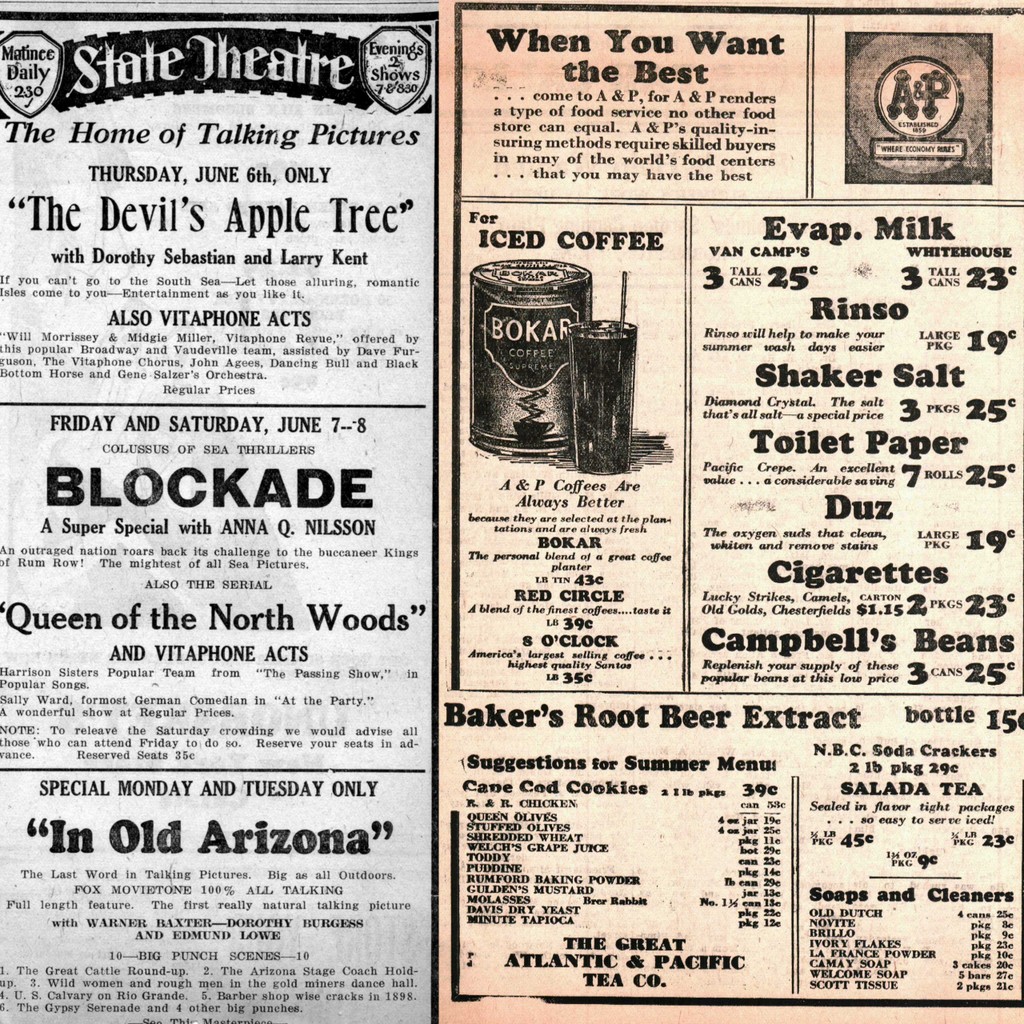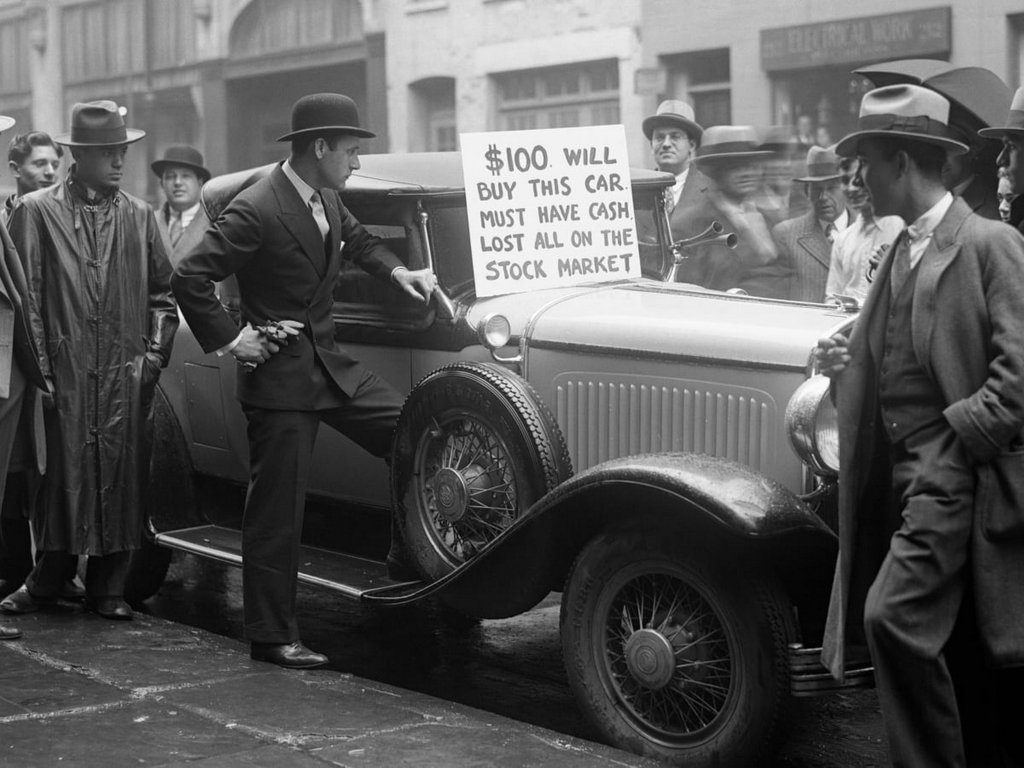
Few folks are around today who remember 1929. After all, a 5-year-old child in 1929 would be 97 today. Nonetheless “1929” evokes, even in those born decades later, images of desperate people in unemployment and soup lines, the stock market’s “Black Monday” on October 28, 1929 followed by “Black Tuesday” the next day together with newspaper accounts of rich men, suddenly paupers, leaping to their deaths from the Wall Street’s skyscrapers.
Maybe it all started on New Year’s Day of 1929 when the University of California’s Roy Reigel picked up a fumble in the Rose Bowl and ran in the wrong direction towards his own goal as his teammates tried in vain to chase him down. Still, if this was an evil omen it wasn’t apparent for most of a year that saw a soaring stock market, a telephone finally installed in the White House and the Tarzan and Popeye comic strips appearing in the papers for the first time. Babe Ruth became the first player to hit 500 home runs just before the stock market hit its all-time high in September before crashing on Black Monday, and the rest is history.
Following the lead of President Herbert Hoover, the Calais Advertiser was not much concerned about the economy reporting that Hoover had met with the giants of industry and finance who had assured Hoover that “The Nations Business Was Sound” and “Unless President Hoover and the leaders of industry, finance and labor are all wrong, the country’s business structure is on a firm basis and there is no reason why prosperity should decrease despite the stock market collapse…” The following week the Advertiser reported Hoover’s plan was “Business as usual-and then some” while encouraging the Congress to cut taxes and urging Americans to tighten their belts and work harder. History has judged this nonchalance very harshly.
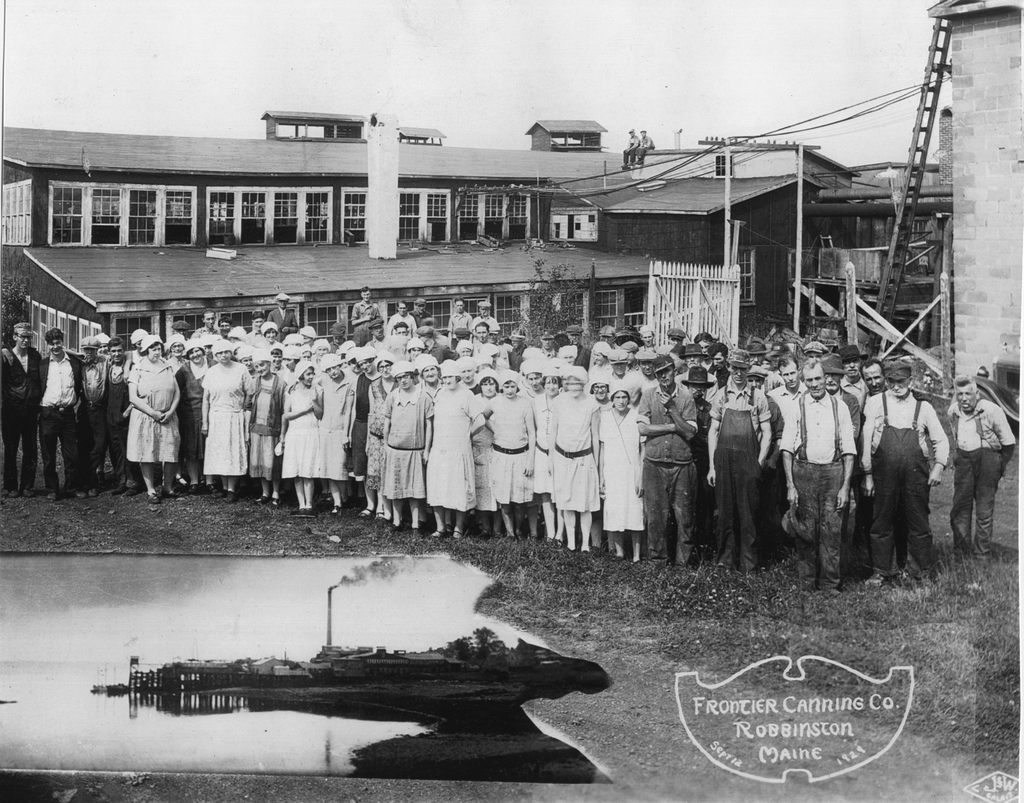
In the St Croix Valley in 1929 the Depression was still a year or more away but there were significant setbacks for the local economy. The Frontier Canning Company of Robbinston, one of the largest sardine packing plants in the state, burned in late October. As can seen in the 1929 photo above, the plant employed a lot of people and not only from Robbinston.
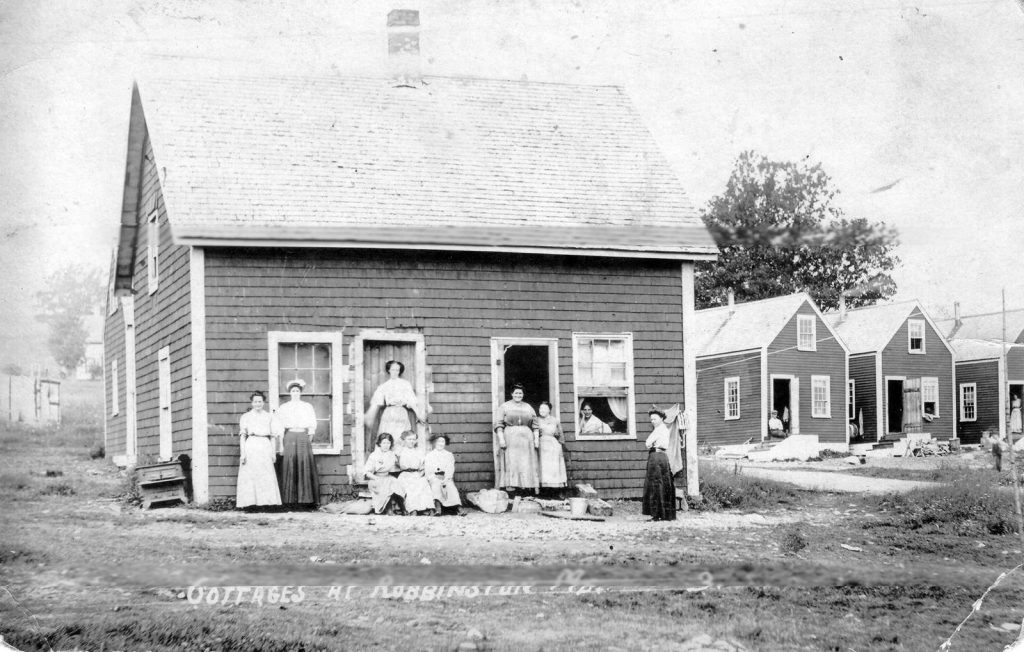
Workers came from many local communities at the first news of the herring running and lived in the cabins provided by the company near the plant. This temporary community had the reputation of being a very lively place, a bit too lively for some.
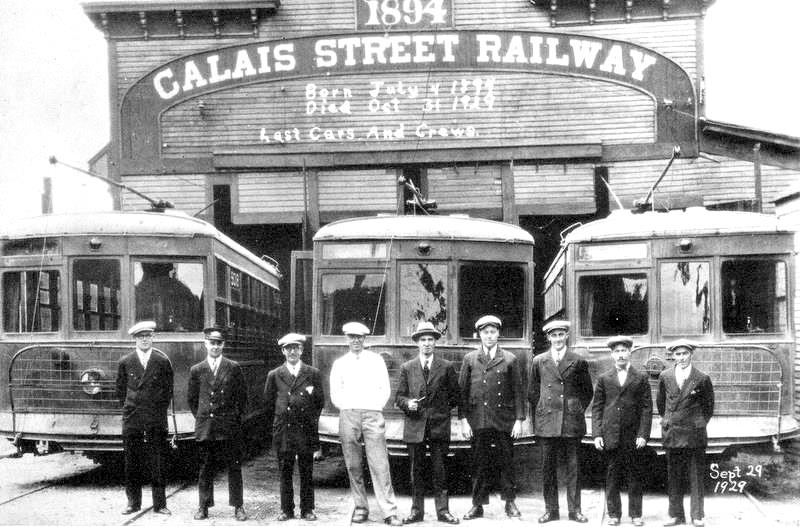
The other significant local economic news of 1929 was the closing of the street railroad. The streetcar had been an important part of life in the valley since 1894 and when announcing its closure, the City Manager was not able to contain his emotions – “his voice cracked answering questions”. Some attempts were made to resurrect the streetcars but the prosperity of the 1920s had allowed many to purchase automobiles and more importantly spawned the “taxi” which ran not a rigid schedule but on demand.

The small building perched on the rocks just below Salmon Falls was the Calais “Pest House”. In the early days those with infectious diseases where often confined here by the City Health Officer until the danger passed. Even in 1929 the Health Officer had the authority to take stern measures when any infectious disease was reported in the community. In his report in 1929 he stated, “The law directs that those diseases shall be reported to him by physicians and also by the householder where they occur. The householder is apt to conceal or at least neglect reporting from fear of quarantine.” Of special concern to the Health Officer in 1929 was smallpox which had been brought under control in much of the world but remained prevalent in the United States although an effective vaccine was available. He bemoaned the failure of the vaccination program and was not alone. As if eerily expressing an opinion on today’s vaccination controversy, the school nurse of Woodland wrote in 1929:
Calais Advertiser (Reprint from St Croix Observer-Woodland’s weekly paper)
November 27th 1929
IS VACCINATION A GOOD THING
By H.D. Parke Park School Nurse
Is there any one thing relating to the welfare of the human race that remains wholly unquestioned? To those who know what vaccination has done and is doing for the world, it is hard to understand how persons can doubt its value. Arguments against vaccination rest almost holy upon these declarations. 1. It is useless 2. it is dangerous 3. it is an invasion of personal liberty.
It is useless?
In 1760 to 1765 before vaccination was known, it was estimated that 15 million human beings died of smallpox every 25 years. Before the House of Commons, in London the statement was made in 1802 that, it is proved that, in this United Kingdom alone, 45000 people die annually of smallpox.
Vaccination is the only reason why such smallpox calamities do not swoop down upon us. It is not because of better surroundings, for smallpox and measles are two of the diseases that go on irrespective of sanitary conditions. It is merely a matter of exposure to infection, with the saving grace of vaccinations helping us end smallpox.
One vaccination has protected all through life even where there has been prolonged and intimate association with smallpox patients, but it is not best to trust too long to a single vaccination. Vaccinations in early childhood and again 7 years later, as is done for everybody in some countries, give the people such a degree of immunity that epidemics are smallpox are unknown among them.
Is vaccination dangerous
When the protective covering of the human body, the skin, is broken by a scratch, cut, or puncture, or by the breaking of a festering pimple or boil, there is always the possibility of results that may be annoying or painful, or even fatal.
Ordinarily the slight local annoyance at the site of the vaccination is the only troublesome result. If the vaccination does not receive proper care, is irritated, or if dirty fingers come in contact with the vaccine sore, it receives a secondary infection which makes unnecessary trouble, and the vaccinated person may have a slight rise of temperature for a day or two. But this rarely occurs.
As an example of the slight possibility of dangerous results from vaccinations in the Philippine Islands the United States authorities vaccinated within a few years 3500000 persons without a single death or any serious complications.
It is an invasion of personal liberty?
Is it? In the matter of smallpox, we have a personal responsibility as citizens to our communities and our state. If we fail to protect ourselves by vaccination and as a result have smallpox, we make public nuisances of ourselves. If we remain unvaccinated and escape smallpox we are an imposition on others who, with more sense and a better appreciation all of their duties as good citizens, have actually protected us in some degree by having themselves vaccinated and thus lessening the “inflammable material” and so making the chance for smallpox conflagrations much smaller than it is in a wholly unvaccinated community.
Free vaccinations will be given at the Woodland grammar and Saint Croix Junior Senior High Schools December 3rd and 4th by doctor RH Purdue. Parents are urged to have their children vaccinated. St. Croix Observer.
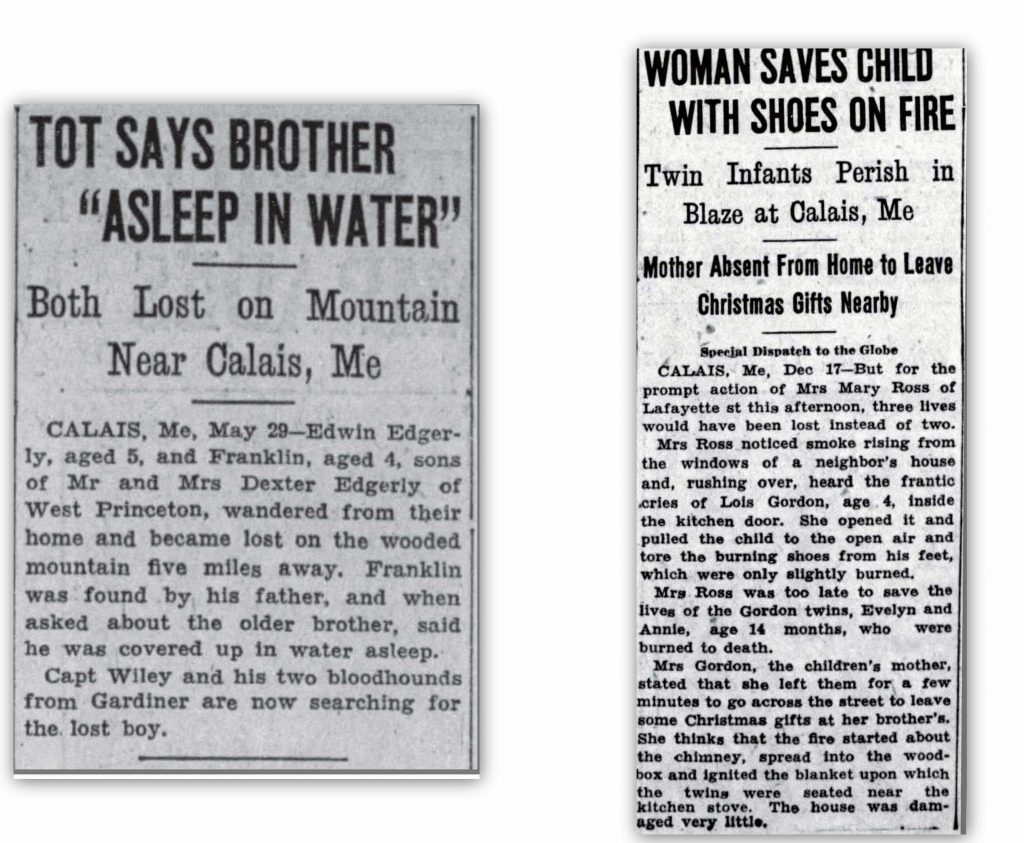
Fatal fires and drownings were much in the news in 1929. Just a couple are shown above. The worst tragedy however occurred in Danforth when Mrs. Llewellyn Munchie received a call that her mother had been in a car accident and fractured her arm. Mrs. Muncey went to her neighbors to borrow a car to take her mother to the hospital and in her absence the family farmhouse caught fire. According to the Advertiser:
The fire, starting from an undetermined cause, swept with such rapidity through the two story unfinished wooden house and adjoining barn that nearby neighbors, attracted by the smoke, were unable to attempt a rescue or to save a vestige of either structure. They said the dwelling was wholly aflame five minutes after the fire was discovered.
Five of the children were in their bed on the second floor and one was in the kitchen when Mrs. Muncey left the house. They believed they had been smothered soon after the fire started as no outcries were heard. Their charred bodies were taken from the debris after the ashes had cooled.
The cause of a tragedy which occurred in Milltown N.B. in 1929 was equally difficult to explain although the murderer was soon identified:
Milltown’s terrible tragedy
Fred Graham a well-known young man of Milltown New Brunswick was found dead in his bed Saturday by his father-in-law John Stickney with whom Mr. and Mrs. Grant resided.
Graham’s young wife, who was seen when she retired with her husband, was missing. Police and citizens organized search parties for the wife and for the weapon with which the crime was committed, supposedly a 44 caliber revolver.
At first it was thought that Mrs. Graham might have thrown herself into the river and a party drag the water below the Union damn, where the finding of a revolver by a child on a street leading to the woods convinced the authorities she had fled in that direction.
Yesterday morning, she was found covered with hay in the barn of Ben Myers, Boundary Street, Mr. Myers, whose attention was attracted by moans on entering the structure. He and Arthur Hill searched the barn and found her in the hay. She asked for a drink of water and requested them to “send for my daddy and tell Fred to come from the mill”. She was clad only in a nightdress and a fur coat, taken from home and also by an old coat that had been hanging in the barn. Her feet were frostbitten. She was taken to the hospital for treatment. She is in a terribly weakened condition, and is night and day under police guard.
An Inquest was held Monday morning by coroner George Maxwell, assisted by Gordon Nicholson. A jury was composed of G H Maxwell, Foreman Edward Nelson, H. G. Dick, Skiff Brown, Fred Park, Colin Kerr and H.E. Hyslop. Dr. W.H. McLaughlin told of examination of the body early Saturday morning and finding that a bullet through the head had caused his death. He believes that the shooting occurred about 5:15. He declared last December he had committed Mrs. Graham to the provincial hospital, and only recently had advised her husband to return her to the institution. The verdict of the jury was that the deceased had met death by a shot from a revolver in the hands of an unknown person. Relatives said that the woman who was 29 years old had acted queerly for the past year. A few months ago she purchased a revolver and when it was discovered she was sent to the St John institution. She appeared to be better and was brought to the Stickney residence, Queen Street near her home.
Funeral services were held Monday for the victim, one of the largest in this community. A large delegation of The Great War Veterans Association and many from the Mason’s order were present, he having served in France during the World War and was a member of the latter organization. The floral contributions were so many that special arrangements had to be made to convey them to the cemetery.
Mr. Graham leaves to mourn a mother and three sisters very prostrated by the sad happening. One brother Roy made the supreme sacrifice in the World War.
Mrs. Graham confessed to the murder but we do not know if there a criminal prosecution or if she was recommitted to an institution.
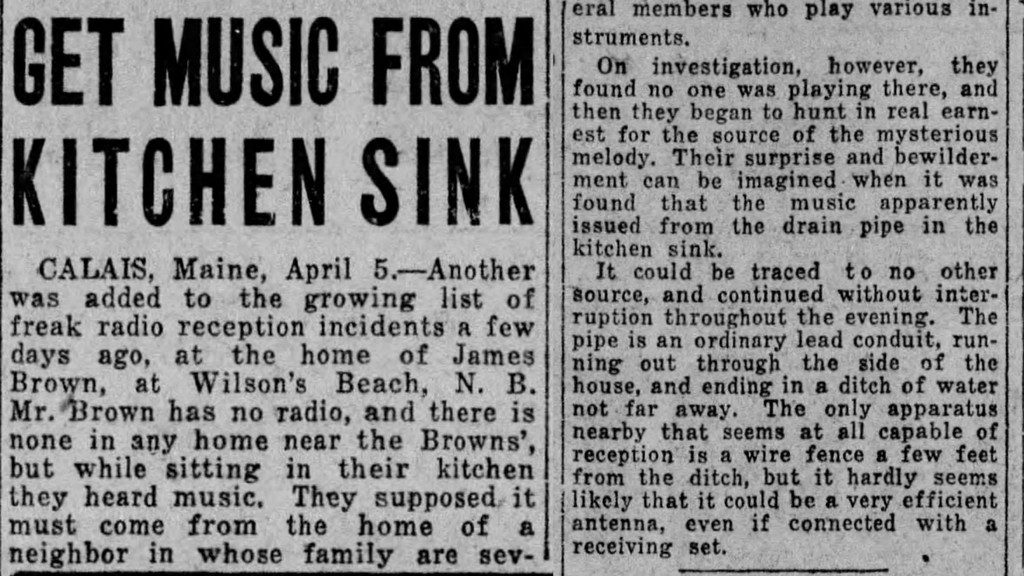
In other news from across the line several national papers reported that this wonderful new invention called radio was even more miraculous than first thought (seen above).
Of Calais, the Reno Nevada Gazette wrote on August 23, 1929:
Calais, Maine, August 23-(AP):
A species of fly strange to this Canadian border town is like some gentlemen in preferences. Insects swarming the International bridge pestered tourists and appeared to customs officers to be bothering blondes more than brunettes.
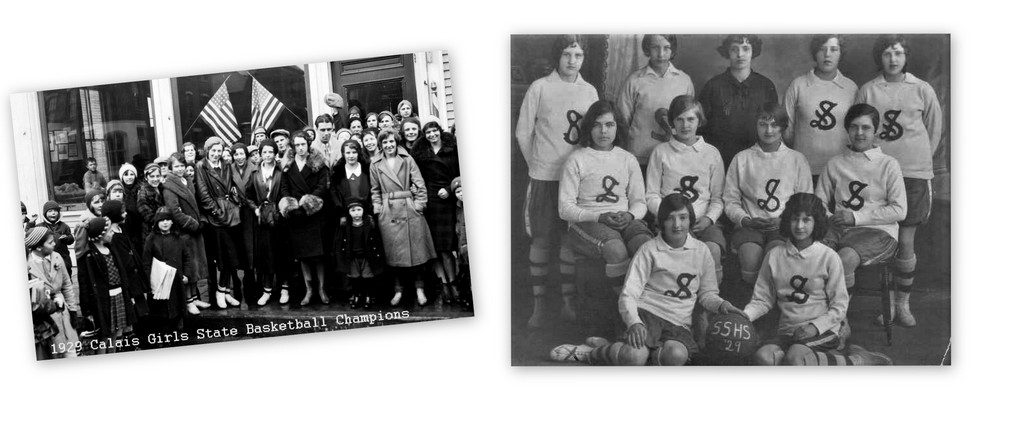
Both the Calais and St. Stephen girls’ basketball teams were champions in 1929. The Calais girls were not only State Champs but the first State Champions as previously no such award existed.
And finally, some ads from 1929:
